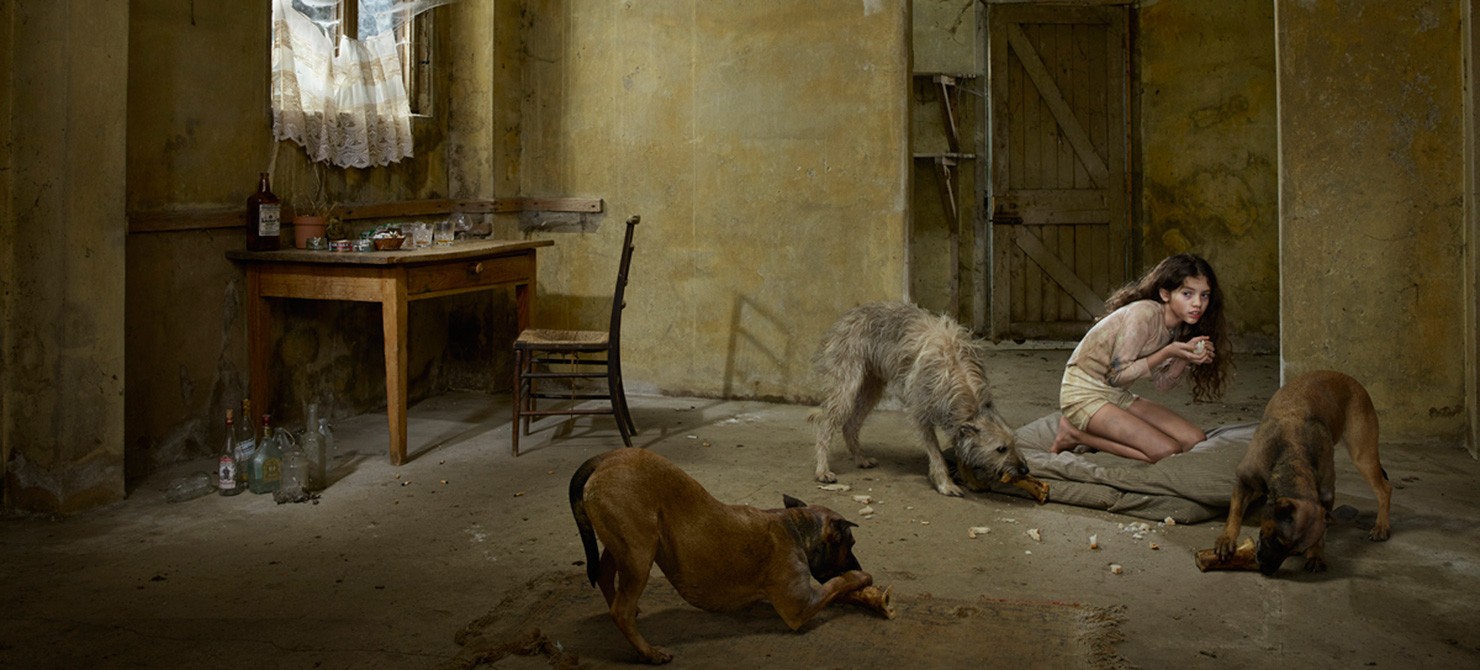
Closer to Nature: Feral Children in Julia Fullerton-Batten’s Project

Born in Germany, grew up in America, moved to England at the age of 16. Studied photography at the Berkshire College of Art and Design. Assisted various photographers, later started a solo career. Lives in London.
My project ‘Feral Children, 2015’ was inspired by reading the biography of Marina Chapman (‘The Girl with no Name’, by Marina Chapman and Vanessa James, her daughter). Marina was 5-years old when she was kidnapped and abandoned by her captors in a Colombian jungle. She was ‘rescued’ five years later, only to enter even more unpleasant life experiences before achieving a more settled life and later on getting married and having a family.
I was appalled and intrigued by this story of this young girl surviving in the wild and it inspired me to search for other cases of feral children. Some several centuries-old cases are surprisingly well-documented because of the great interest at that time of the development of speech and social behavior patterns. Other cases mentioned are even more recent from the 21st Century.
With this project, each feral child was a project in itself, requiring intensive research and pre-planning. Finding the locations for shooting and sourcing dogs, wolves, monkeys and a leopard took a long time.
Myself and an associate found a number of suitable candidates for each child. Many of them were actors. I explained to them that they would be made up to look half-naked, dirty, bruised and scarred. Some of the children couldn't really believe the stories but found them interesting. Several of the parents found them very disturbing, and were unsure about their child’s participation. However, they were all happy to do the shoot when they heard that my reason for doing it was to increase global awareness of feral children and the suffering they experienced.
Sujit Kumar, Chicken Boy Fiji, 1978.
Sujit exhibited dysfunctional behavior as a child. His parents locked him in a chicken coop. His mother committed suicide and his father was murdered. His grandfather took responsibility for him but still kept him confined in the chicken coop. He was eight years old when he was found in the middle of a road, clucking and flapping. He pecked at his food, crouched on a chair as if roosting, and would make rapid clicking noises with his tongue. His fingers were turned inward. He was taken to an old people’s home by care workers, but there, because he was so aggressive, he was tied with bed sheets to his bed for over 20 years. Now he is over 30 years old and is cared for by Elizabeth Clayton, who rescued him from the home.
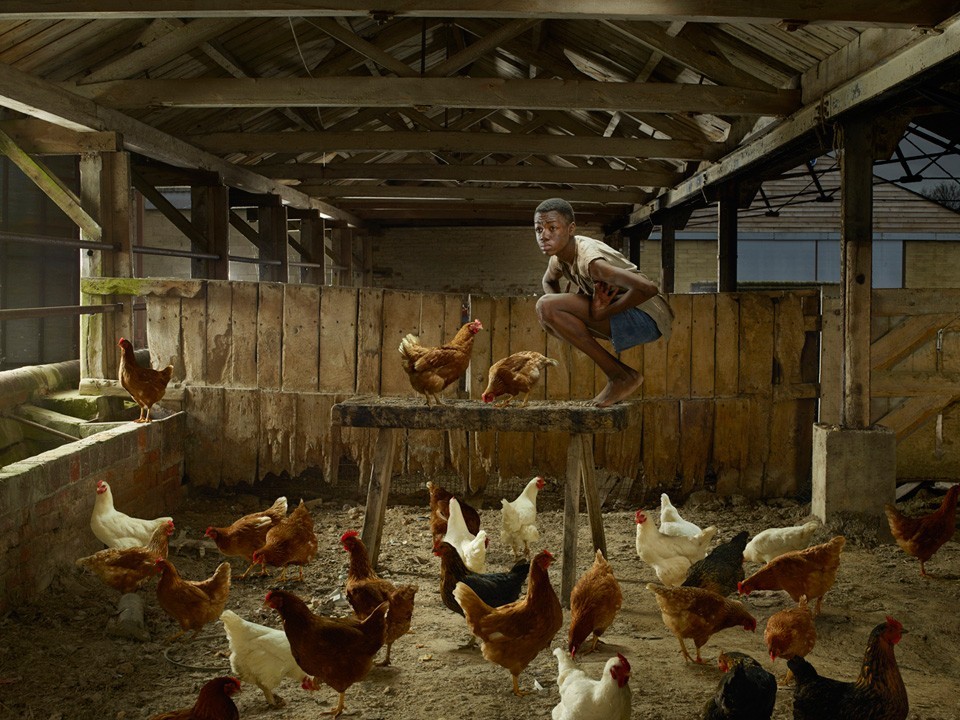
Genie USA, 1970.
When she was a toddler Genie’s father decided she was "retarded" and restrained her in a child’s toilet seat in a small room of the house. She lived in solitary confinement for more than 10 years. She was 13 years old in 1970 when she and her mother turned up at child services and a social worker noticed her condition. She was still not toilet-trained and moved with a strange sideways "bunny-walk". She couldn't speak or make any sound and constantly spat and clawed herself.
For years she became a research object. She gradually learned to speak a few words but couldn’t arrange them grammatically. She also began to read simple texts, and developed a limited form of social behavior.
At one stage, she briefly lived again with her mother, but was then for several years passed through various foster homes experiencing abuse and harassment. She returned to a children’s hospital where it was found that she had regressed back to silence.
Funding for Genie's treatment and research was stopped in 1974 and it wasn’t known what happened to her, until a private investigator located her in a private facility for mentally underdeveloped adults.
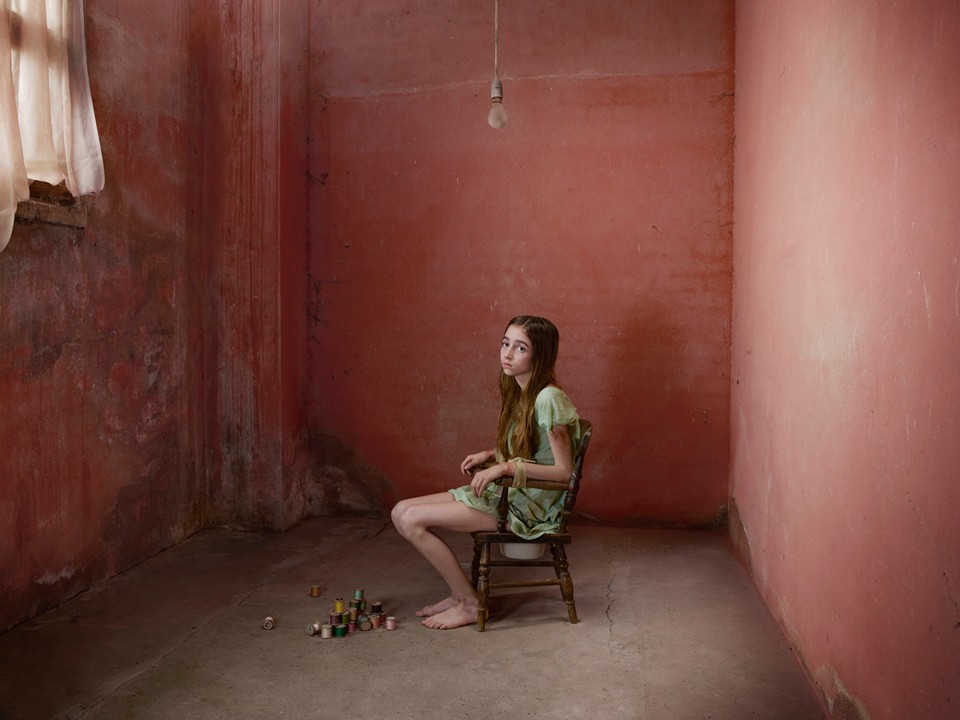
Ivan Mishukov Russia, 1998.
Ivan was abused by his family and ran away when he was only 4 years old. He lived on the streets begging. He developed a relationship with a pack of wild dogs, and shared the food he begged with the dogs. The dogs grew to trust him and eventually he became something of a pack leader. He lived for two years in this way, but he was finally caught and placed in a children’s home. Ivan benefited from his existing language skills that he maintained through begging. This and the fact that he was feral for only a reasonably short time aided his recovery. He now lives a normal life.
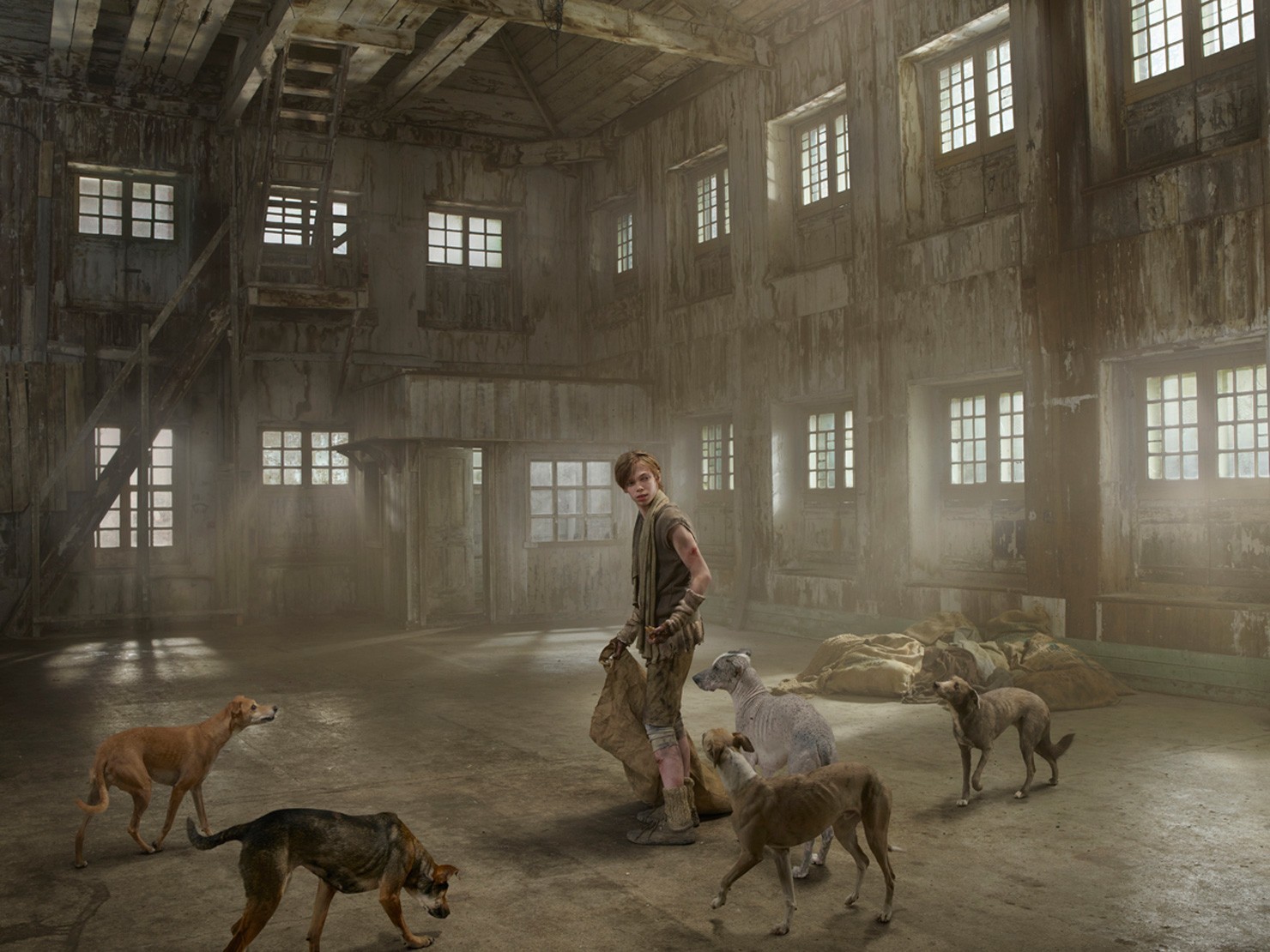
Oxana Malaya Ukraine, 1991.
Oxana was found living with dogs in a kennel. She was eight years old and had lived with the dogs for six years. Her parents were alcoholics and one night, they had left her outside. Looking for warmth, the three year old crawled into the farm kennel and curled up with the mongrel dogs, an act that probably saved her life. When discovered she behaved more like a dog than a human child. She ran on all fours, panted with her tongue out, bared her teeth and barked. Because of her lack of human interaction, she only knew the words “yes” and “no.”
Intensive therapy aided Oxana to learn basic social and verbal skills, but only with the ability of a five year-old. Now 30 years old, she lives in a clinic in Odessa and works with the hospital’s farm animals under the supervision of her caregivers.
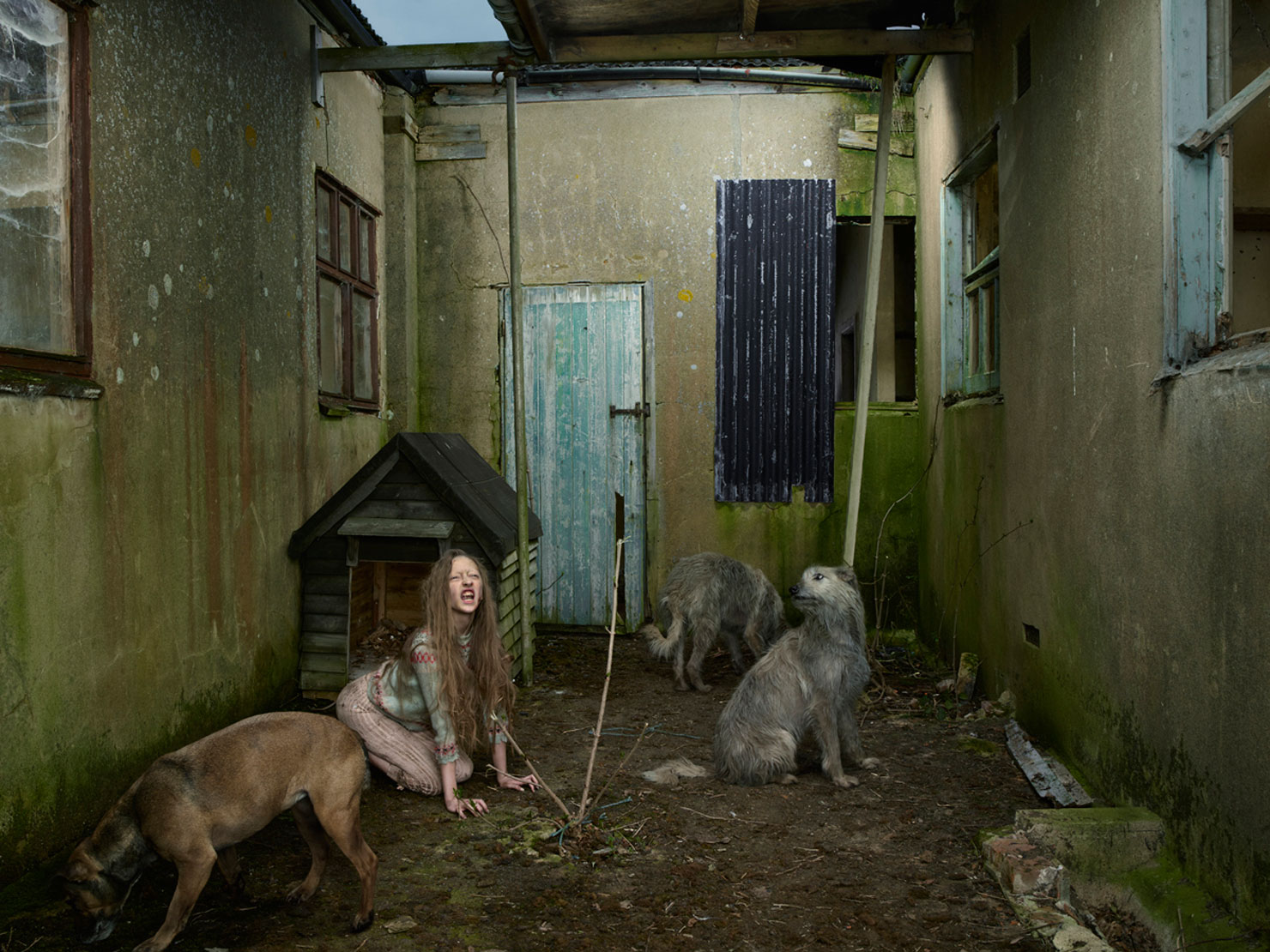
Rochom P’ngien, Jungle Girl Cambodia, 2007.
Rochom was a grown woman when she was caught stealing food from a villager’s lunch box. A village policeman claimed that she was his daughter - he recognized a prominent scar on her back - who, in 1988 at eight years of age, went missing with her 6-year old sister while herding water buffalo. It was assumed that they got lost in the jungle. The sister was never found.
When Rochom was captured she was naked, filthy and scarred. She could not talk. If she was thirsty or hungry, she would point at her mouth. She preferred to crawl on all fours rather than walk upright.
Rochom had difficulty in a adjusting to civilization. In a year, she could feed, bathe and dress herself, but still could not speak. In another year, she started to understand and use some words of their native language. However, after some time she took to living and sleeping in a small chicken coop near the family's home, but would join the family for meals every three or four days. She still could not speak.

John Ssebunya, The Monkey Boy Uganda, 1991.
John ran away from home when he was three years old after seeing his father murder his mother. He fled into the jungle where he lived with monkeys. He was captured when he was about six years old, and placed in an orphanage.
When he was cleaned up it was found that his entire body was covered in hair. His diet had consisted mainly of roots, nuts, sweet potatoes and cassava and he had developed a severe case of intestinal worms, found to be over half a meter long. He had calluses on his knees from walking like a monkey.
John has learned to speak in human ways. He was found to have a fine singing voice and is famous for singing and touring in the UK with the 20-strong Pearl of Africa children’s choir.

Marina Chapman Colombia, 1959.
Marina was kidnapped at 5 years of age from a remote South American village and left by her kidnappers in the jungle. She lived with a family of small capuchin monkeys for five years before she was discovered by hunters. She ate berries, roots and bananas dropped by the monkeys; slept in holes in trees and walked on all fours, like the monkeys. One time, she got bad food poisoning. An elderly monkey led her to a pool of water and forced her to drink, she vomited and began to recover. She was befriended by the young monkeys and learned to climb trees and what was safe to eat from them.
Marina had lost her language completely by the time she was rescued by hunters. She was sold by the hunters into a brothel, escaped and lived as a street urchin. Next she was enslaved by a mafia-style family, before being saved by a neighbor, who sent her to Bogotá to live with her daughter and son-in-law. They adopted Marina alongside their five natural children. The family with Marina moved to Bradford, Yorkshire in the UK in 1977, where she settled. She married and had children. Marina and her younger daughter, Vanessa James, co-authored a book about her feral experiences, and those afterwards - The Girl With No Name.
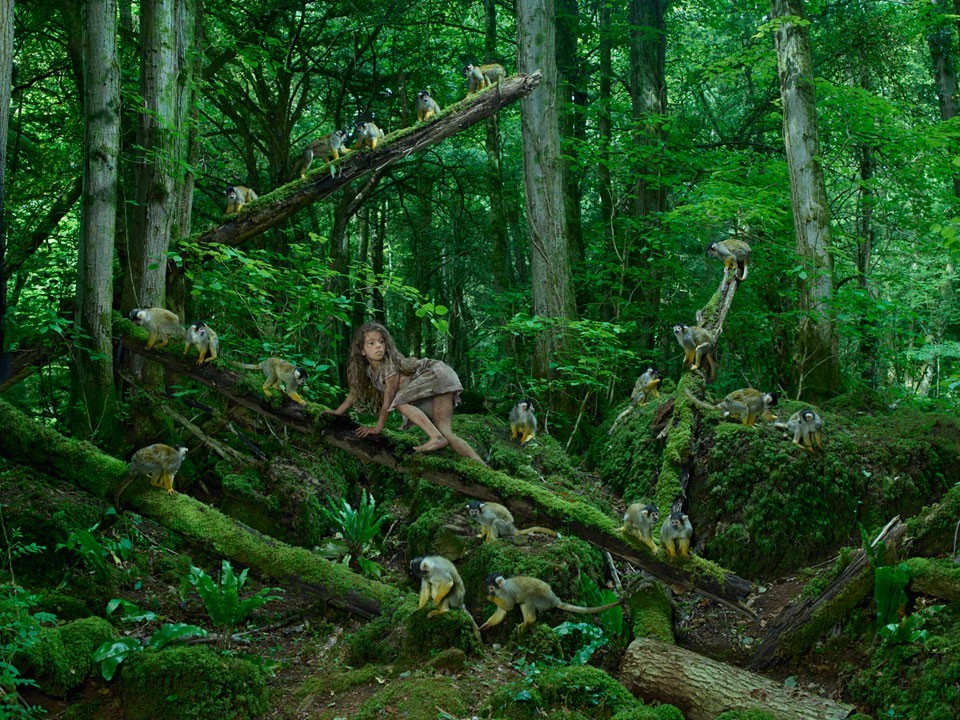
Kamala and Amala India, 1920.
Kamala, 8 years old, and Amala, 1½, were found in a wolves’ den. It is one of the most famous cases of feral children. The girls were hideous looking, their tendons and the joints in their arms and legs were shortened, they ran on all fours and didn’t look human.
When first caught, the girls slept curled up together, growled, tore off their clothing, ate nothing but raw meat, and howled. Their hearing, sight and sense of smell was exceptional. They had no interest in interacting with humans.
Amala died the following year after their capture. Kamala eventually learned to walk upright and say a few words, but died after nine years from kidney failure.

Victor, The Wild Boy of Aveyron France, 1797.
This is a historical but surprisingly well-documented case of a feral child, as he was very much researched at the time to attempt to find the derivation of language. Victor was seen at the end of the 18th century in the woods in the south of France and captured but somehow escaped. In three years he was caught again. He was about 12 years old, his body covered in scars and unable to speak a word.
Little is known about the background of his time as a feral child, but it is believed that he spent 7 years in the wild. Victor showed no effect of the cold temperature on him whatsoever, and he could sleep in the snow.
They tried to teach him to speak and behave ‘normally’, but he made no progress. He was probably able to talk and hear earlier in his life, but he was never able to do so after returning from the wild. Eventually he was taken to an institution in Paris and died at the age of 40.
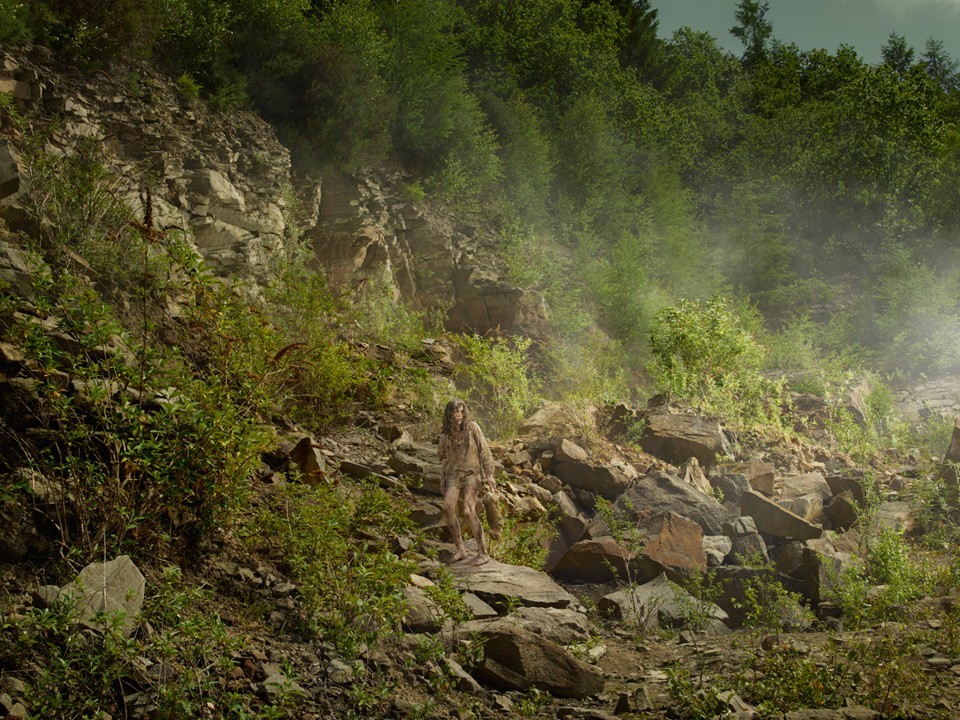
Marie Angelique Memmie Le Blanc, The Wild Girl of Champagne France, 1731.
Apart from her childhood, Memmie’s story from the 18th century is surprisingly well-documented. She was captured at age 19. For ten years, she had lived in the woods, ate birds, frogs and fish, leaves, branches and roots. Armed with a club, she fought off wild animals. She was black-skinned, hairy and with claws.
When Memmie knelt down to drink water she made repeated sideways glances, the result of being in a state of constant alertness. She couldn't speak and communicated only with shrieks and squeaks. She skinned rabbits and birds and ate them raw. For years she did not eat cooked food. Her thumbs were malformed as she used them to dig out roots and swing from tree to tree like a monkey. Six years after her capture, the Queen of Poland, mother to the French queen, and on a journey to France, took Memmie hunting with her, where she still ran fast enough to catch and kill rabbits.
Memmie’s recovery from her decade long experiences in the wild were remarkable. She had a series of rich patrons, learned to read, write and speak French fluently. In 1747, she became a nun for a while. In 1755, a Madam Hecquet published her biography. Memmie died financially well-off rich in Paris in 1775, aged 63.
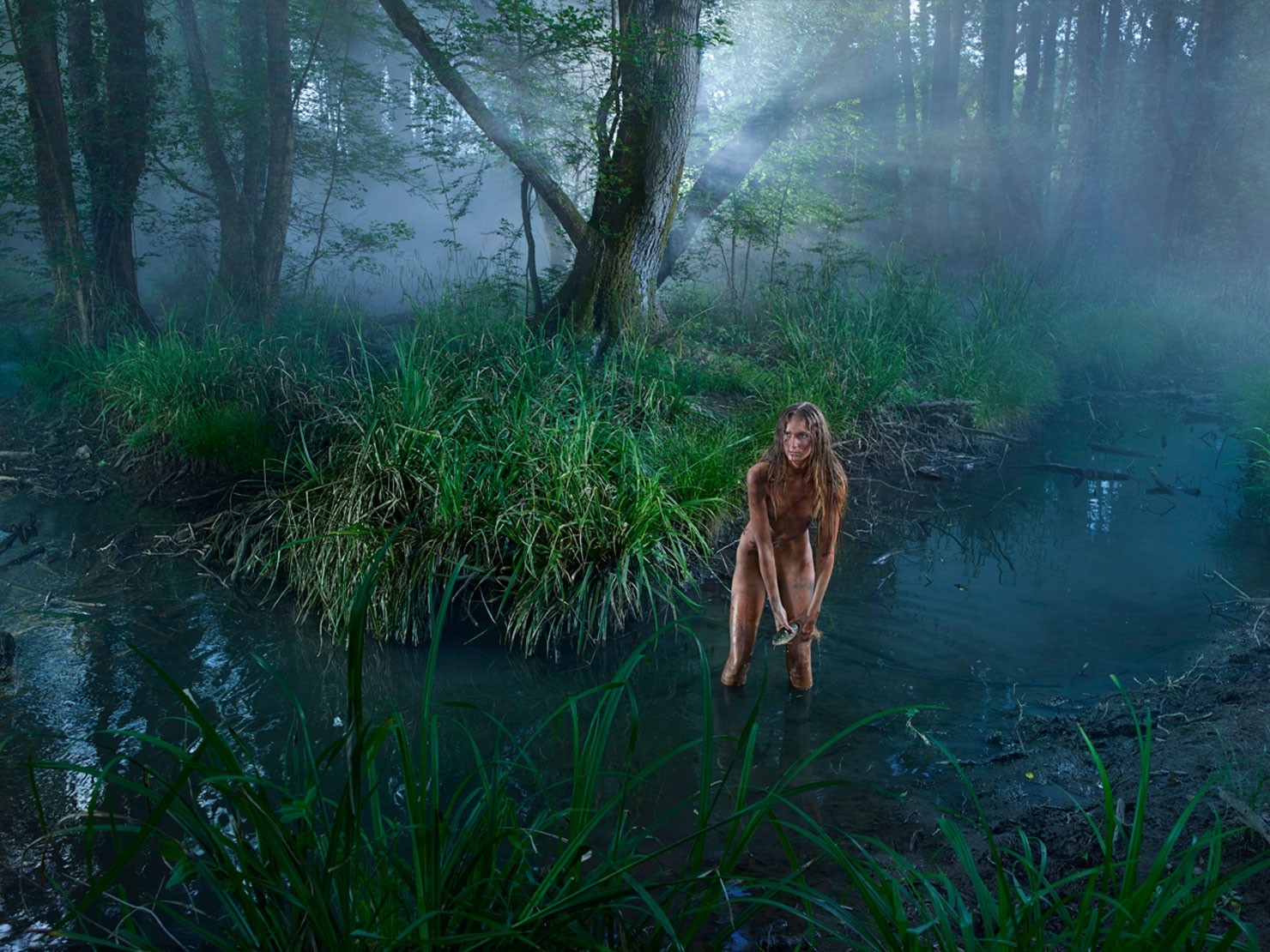
Madina Russia, 2013.
Madina lived with dogs from birth until she was 3 years old, sharing their food, playing with them, and sleeping with them when it was cold in winter. When social workers found her in 2013, she was naked, walking on all fours and growling like a dog.
Madina’s father had left soon after her birth. Her mother, 23 years old, took to alcohol. She was frequently too drunk to look after for her child and often disappeared. She would frequently invite local alcoholics to visit the house. Her alcoholic mother would sit at the table to eat while her daughter gnawed bones on the floor with the dogs. Madina would run away to a local playground when her mother got angry, but the other children wouldn’t play with her as she could hardly speak and would fight with everyone. So dogs became her best and only friends.
Doctors reported that the Madina is mentally and physically healthy despite her ordeal. There is a good chance that she will have a normal life once she has learned to speak more in line with a child of her age.
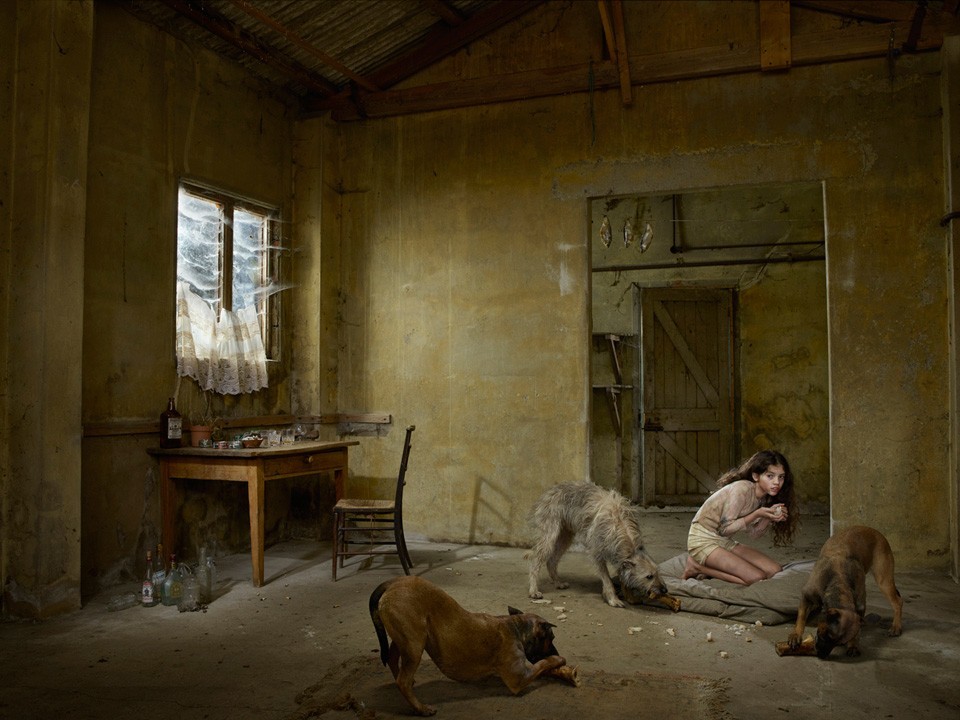
Prava, The Bird Boy Russia, 2008.
Prava, a seven-year-old boy, was found in a tiny, two-bedroom apartment, living with his 31-year old mother - but he was confined in a room filled with bird cages, containing dozens of his mother’s pet birds, bird feed and droppings. She treated her son as another pet. He was never physically harmed, she neither beat him nor left him without food, but she never spoke to him. His only communication was with the birds. He could not speak but chirped. When he wasn’t understood he would wave his arms and hands bird-like.
Released into child care by his mother, Prava was moved to a center for psychological care where doctors are trying to rehabilitate him.
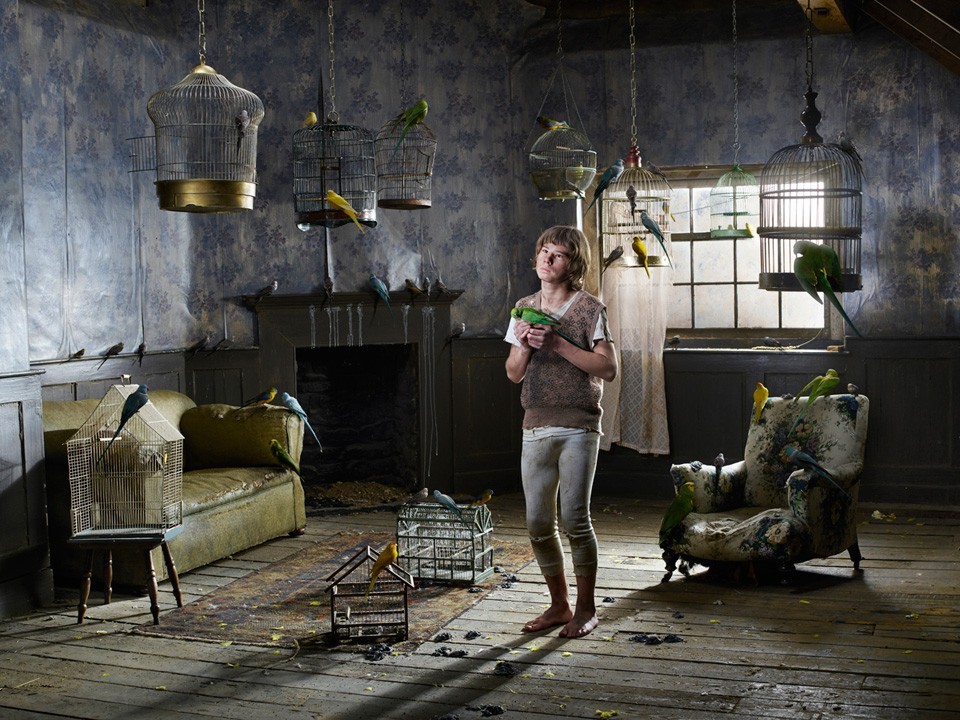
The Leopard Boy India, 1912.
The boy child was two years-old when he was taken by a leopardess in 1912. Three years later a hunter killed the leopardess and found three cubs, one of which was the now five year-old boy. He was returned to his family.
When first caught he would only squat and ran on all fours as fast as an adult man could do upright. His knees were covered with hard callouses, his toes were bent upright almost at right angles to his instep, and his palms, toe- and thumb-pads were covered with a tough, horny skin. He bit and fought with everyone who approached him, and caught and ate the village fowl raw. He could not speak, uttering only grunts and growls.
Later, he had learned to speak and walked more upright. Sadly, he became gradually blind from cataracts.
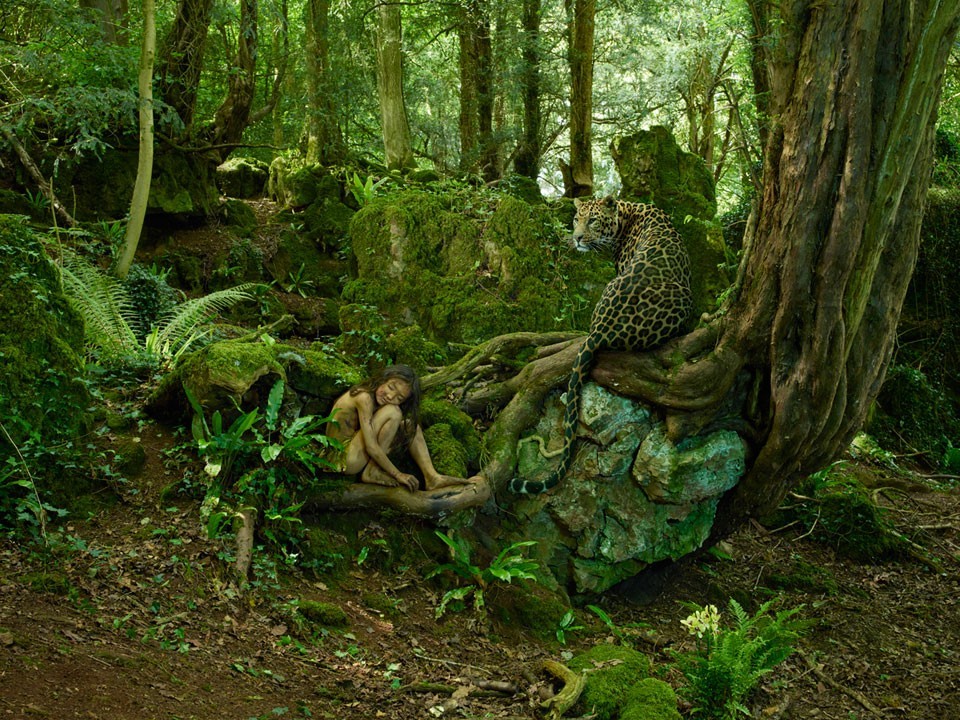
Lobo, Wolf Girl Mexico, 1845/1852.
In 1845 a girl was seen running on all fours with a pack of wolves attacking a herd of goats. A year later she was seen with the wolves eating a goat. She was captured but escaped. Seven years later, she was seen yet again suckling two wolf cubs, but she ran into the woods.
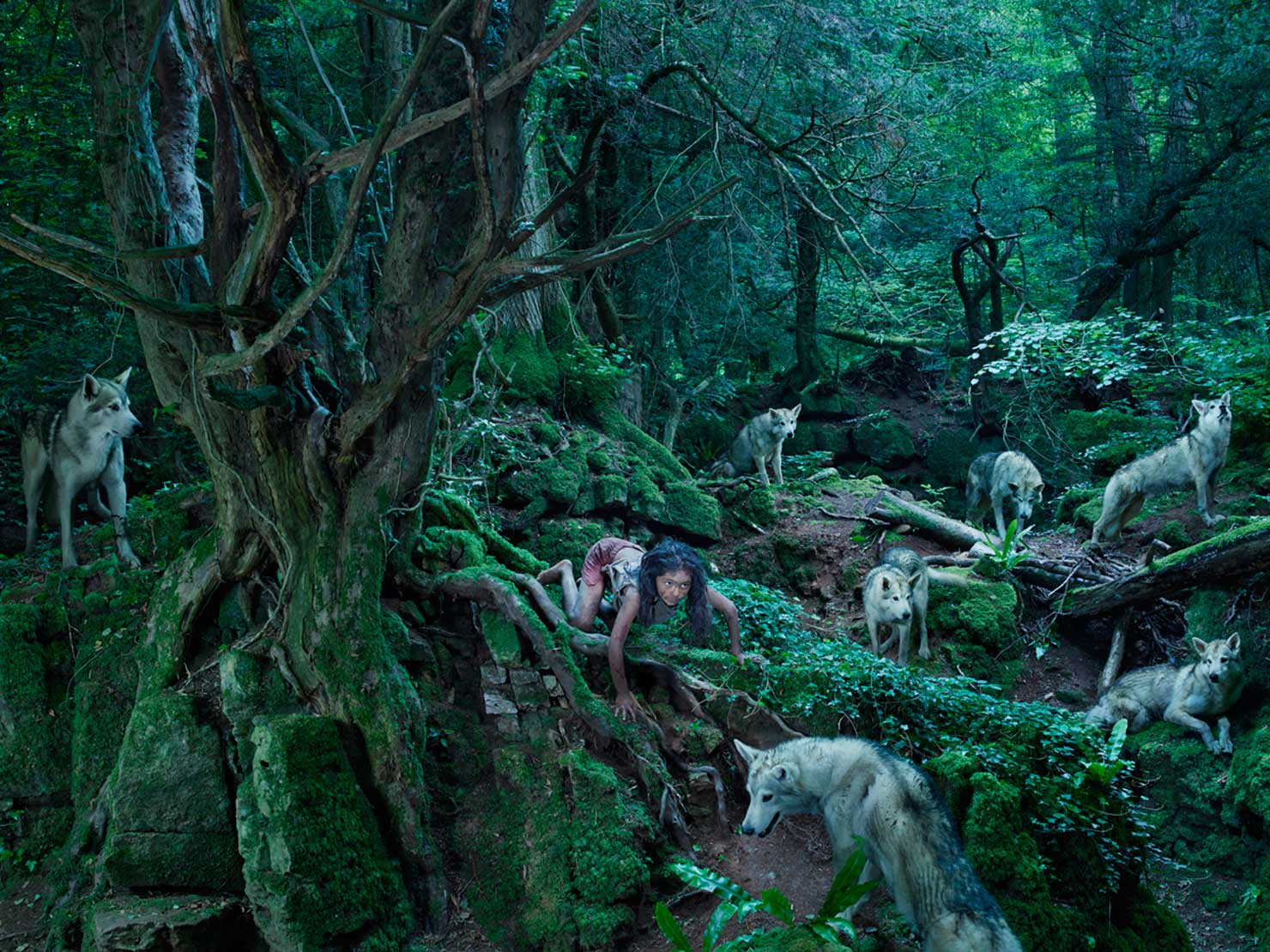
Shamdeo India, 1972.
Shamdeo, a boy aged about four years old, was discovered in a forest in India. He was playing with wolf cubs. His skin was very dark, and he had sharpened teeth, long hooked fingernails, matted hair and calluses on his palms, elbows and knees. He was fond of chicken-hunting, would eat earth and had a craving for blood. He bonded with dogs.
He was finally weaned off eating raw meat, never talked, but learnt some sign language. In 1978, he was admitted to Mother Theresa’s Home for the Destitute and Dying in Lucknow, where he was re-named Pascal. He died in February 1985.







